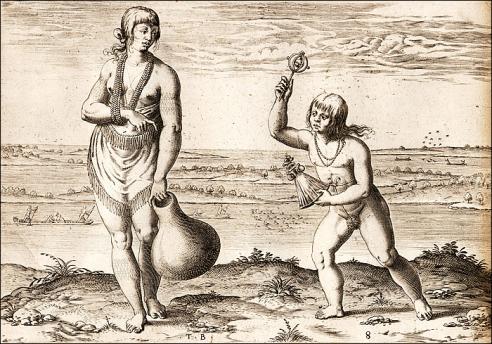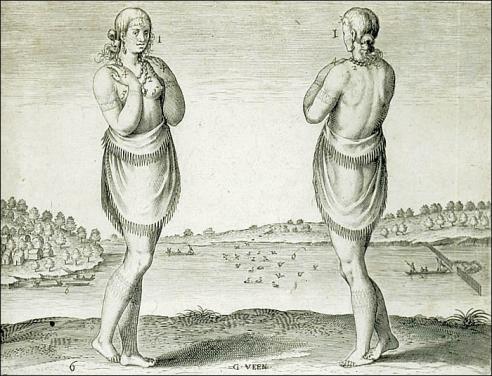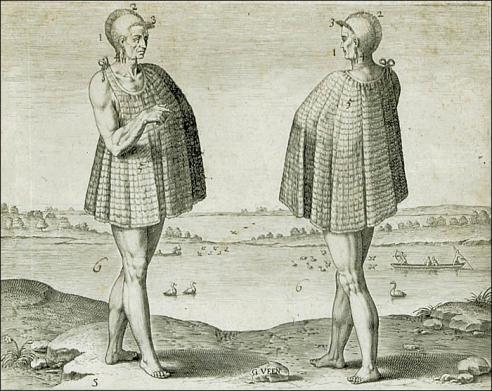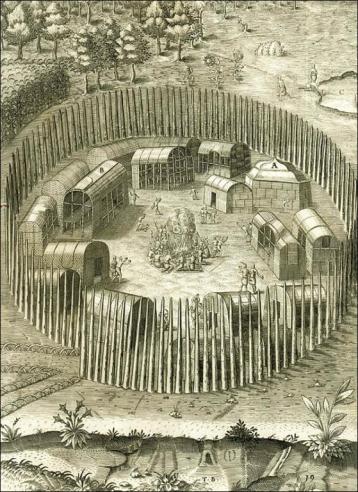Theodore de Bry's Engravings
In 1590, Theodore de Bry reprinted Thomas Hariot's A briefe and true report of the new found land of Virginia. The text was illustrated with copper-plate engravings by de Bry and his associate, Gysbert van Veen, based on paintings by John White. The engravings signed by van Veen are stylistically identical to those signed by de Bry. The captions that accompany each engraving in the book are usually credited to Thomas Hariot.
Of the nineteen or so extant paintings by John White related to Virginia Indians, all are represented in the de Bry engravings. Ten are portrait studies of one or two figures, and three are landscapes. The de Bry engravings follow the White watercolors very closely in some respects and differ in others. White and de Bry were probably each responsible for some of the differences. It could well have been White—when he painted the set of copies for de Bry—who placed his figures into landscapes and showed them in both front and back views. From the hands of de Bry and van Veen, however, came the evolution from the mannered yet casual postures of the Indians in White's originals, to the sculpture-like poses in the engravings, with muscular physiques, small hands and feet, and Europeanized faces.
A Chief Lady of Pomeiooc
John White labeled this image "A cheife Herowans wife of Pomeoc, and her daughter of the age of 8 or 10 years." A Herowan was a chief or leader; Pomeiooc (or Pomeoc) was the name of a town. The book's caption observes that Indian girls "are greatly delighted with puppetts, and babes which were brought out of England." The girl holds a doll and a second toy that looks like a bell or rattle.
One of the religious men of the town of Secota
John White's paintings show two types of Indian religious men: one, as here, an older wise man; the second, a younger and more active figure called at different times "the flyer," "the magician," or "the sorcerer." (The hand-written numbers in the image are a later addition, keying details to their description in the text.)
 A young gentle Woman Daughter of Secota
A young gentle Woman Daughter of Secota
![The sundry Marks of the Chief Men of Virginia by Theodore de Bry [probably after John White]. (Engraving from book page Plate 13 from America, Part 1, 1st ed., Frankfurt, 1590–1607) Painting of an American Indian man’s back profile in a posed position holding arrows in his right hand and a long stick in his right hand with his arm extended outwards. Symbols and arrows are included around the man, with the letters A, B, C, D, E, F, and G labeling each symbol.](/sites/default/files/uploads/VHE_EarlyImagesAmericanIndians_sundry_medium.jpg) The sundry Marks of the Chief Men of Virginia
The sundry Marks of the Chief Men of Virginia
By Theodore de Bry [probably after John White]
Engraving from book page
Plate 13 from America, Part 1 (1st ed., Frankfurt, 1590–1607)
By Theodore De Bry after John White
Engraving from book page
Plate 19 from America, Part 1, 1590


